Pomeranian Husky or Pomsky [pohm-skee]
A Pomsky is a hybrid or ‘designer’ dog breed that is a cross between a Pomeranian and a Siberian Husky. Also known as a Pomeranian Husky.
This cute Husky Pomeranian mix has taken social media and the internet by storm in last couple of years.
And why not? This new designer breed is getting popular for a reason, it is one of the cutest dogs you will ever find. If you are looking to learn more about this amazing new designer dog, you are at the right place. You will find everything you are looking for about the Pomsky dogs here.
Whether you are a prospective parent or already a proud owner, our goal is to provide our readers with the most up to date information on the breed. We try to keep it simple & fresh, adding articles regularly and we try to keep it light and incorporate a lot of pictures.
To be clear, we are not Pomeranian Husky breeders, however we do have a very coveted listing of Pomsky breeders so be sure to check it out if you are ready to bring one of these sweet puppies home!
Check out the biggest list of Pomsky breeders on the internet.
11 Critical Things to Know About the Pomsky (Pomeranian Husky) Dog Breed
Let’s start with the little history and background.
A Husky Pomeranian is a dog breed which appeared in 2013 and gained huge traction and attention for its cuteness and playful nature.

Since it was bred in the past few years there is limited history and background available on the breed – things like life expectancy and potential health problems as these dogs grow older is not fully known.
Also, due to the large differences in size of the Pomeranian and the Siberian Husky – careful attention must be paid to learn how the puppies are being bred.
Read our article on how the artificial breeding process actually is done.
So, if you’re thinking of getting a Pomsky (also known as a Pomeranian Husky) but don’t know where to start than luckily you’ve come to the right place!
It’s easy to lose track of the time as you swoon over those awfully cute Husky-looking-puppies in the body of a Pomeranian.
But after snapping out of it, you realize that dog breeders and owners often share different opinions on how to buy and raise a Pomsky, leaving you with no clear answers.
Coming here to read more about this designer dog breed is a step in the right direction.
Whether you want to know if a Pomsky is the right pet for you and your family or if you can afford to care for one, you will learn that here.
Let’s start by defining what is a Pomsky dog.
A Pomsky is an adorable mix of a Pomeranian male and a Siberian Husky female. This dog breed is popular among dog owners who are looking to get a husky look-alike but smaller in size.
However, as with any dog breeds, this fluffy furbaby is not for everyone.
Pomskies do have certain traits and needs that some people might find hard to keep up with. No one wants to end up rehoming their man’s best friend, right?
So, let’s find out if you have it in you to be the next Pomsky parent!
1. The Pomsky is a new designer dog breed
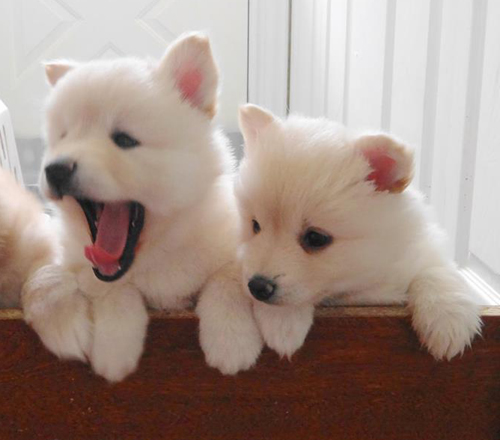 Pomskies are relatively new in the dog breeding arena that owners can call themselves a pioneer. To start, it’s a novel idea to mix a Siberian Husky female and a Pomeranian male through artificial insemination.
Pomskies are relatively new in the dog breeding arena that owners can call themselves a pioneer. To start, it’s a novel idea to mix a Siberian Husky female and a Pomeranian male through artificial insemination.
That’s right. A Pomsky puppy can be obtained through artificial insemination!
Have you seen a pair standing side-by-side?
The huge height difference explains it. And this is also one of the reasons why they join the ranks of celebrity dog-level kind of expensive.
Secondly, there’s little data to know which of the parents’ traits will be dominant.
Is your Pomsky going to be agile and good-natured like most huskies? Or is he going to be that extroverted Pomeranian who loves to be the center of attention?
Raising a Pomsky can be an exciting journey for someone who likes surprises. Not to mention their appearance can also come in different patterns and colors like brown/red, grey/white and blue merle.
As a first-gen mix, dog breeders rely on having a Pomeranian dad and Siberian Husky mom to produce a Pomsky rather than having a pair of Pomsky dad and Pomsky mom.
As a result, their looks may change a bit as they grow up. There are those that may grow up looking mostly like their Siberian Husky mother – large and athletic -, while some will look like their Pomeranian father – small and fluffy.
This goes to show you how new this mixed breed is. An experienced dog breeder can guess which pup(s) in the litter will have the following qualities by the time they reach eight to ten weeks old:
- A certain color combination
- Bigger and stronger build
- Small and fluffy build
- Determine their dominant personality
Alternatively, if you’re looking to adopt a Pomsky adult instead, it pays to schedule a visit with your dog shelter or rescue center to get an idea how they look like. This should also give you an insight into what kind of caring, bedding and grooming they will need from you in the future.
2. Pomsky puppies can be expensive!
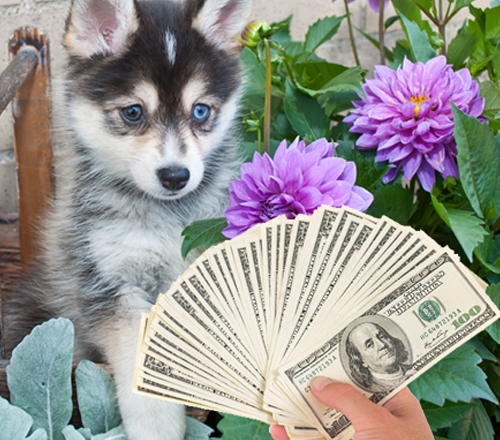 Pomskies are in high demand and they attract a lot of attention when they’re in a crowd. They are a designer dog breed after all so the price tag can be as steep as the price of gold.
Pomskies are in high demand and they attract a lot of attention when they’re in a crowd. They are a designer dog breed after all so the price tag can be as steep as the price of gold.
The Pomsky price from a reputable breeder costs anywhere between $2000 and $5000.
This is just for buying this furbaby alone so imagine how much it will cost you to own one for the long haul.
According to the American Kennel Club (AKC), the cost for a medium size dog for the first 12 months is $2,889 and $2,000 for the succeeding years.
Here’s a breakdown of cost per medium size Pomsky:
- Medical insurance – $200 to $700
- Vet checkups and other bills – $650
- Toys and accessories – $432
- Vaccinations – $389
- Food and treats – $500
Are you still interested in owning a Pomsky? Yes? Good, let’s continue below.
3. Pomskies can be susceptible to their parents’ health problems
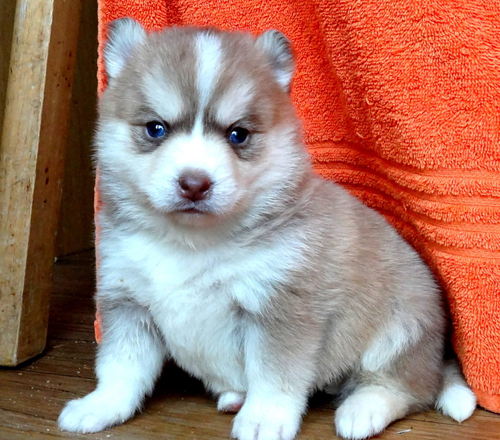 Since Pomkies are a new breed, it is also highly recommended to keep yourself educated about the potential health problems that they may inherit from their Sibe and Pom parents.
Since Pomkies are a new breed, it is also highly recommended to keep yourself educated about the potential health problems that they may inherit from their Sibe and Pom parents.
Proponents say that cross-breeding can help reduce the risk of developing genetic diseases and disorders. However, critics think that this method will only lead to more genetic abnormalities. Which is which – well, we can’t say for certain because this is still a debatable topic within the dog breeding industry.
The safest option is to not go in blind and not prepare yourself for the worst thing that could happen.
Below are some of the most common health problems in Sibes and Poms:
Siberian Husky
- Skin allergies
- Pigment loss
- Progressive retinal atrophy
- Hip dysplasia
- Corneal dystrophy
- Cataracts
- Uveodermatologic syndrome (eye and skin inflammation)
Pomeranian
- Allergies
- Dry and itchy skin
- Obesity
- Seizures
- Luxating patella (floating kneecap)
- Hypoglycemia
- Cataracts, distichiasis and entropion
- Collapsed trachea
- Hip dysplasia
For early detection, it is important to do screening tests and go to vet checkups every two months. Review your puppy’s health records and ask your vet if there are other screenings that should be done as early as now.
For long-term prevention, it is advisable to invest in grooming tools and services. Grooming experts can spot abnormalities in your pup’s body that may otherwise be overlooked.
Lastly, always pay attention to your Pomsky’s suspicious behavior.
Early warning signs like lethargy, loss of appetite and disorientation should be investigated. And if it’s something you can’t handle, seek professional help.
4. Toy to medium dog size
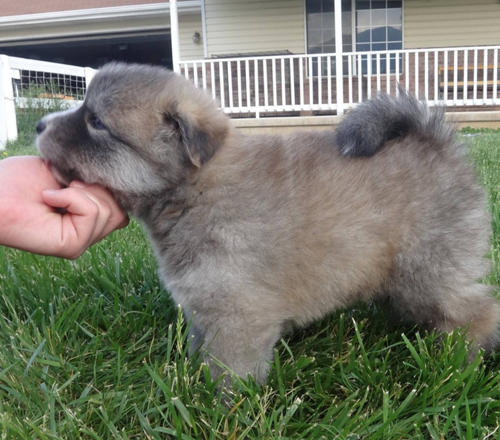 As mentioned earlier, most Pomskies you see today are classified as a first-generation mix.
As mentioned earlier, most Pomskies you see today are classified as a first-generation mix.
There is no way to say for sure how they will look like by the time they reach adult stage, other than make educated guesses.
But most breeders agree that a Pomsky’s size can be anywhere between a toy and medium size.
They can grow 10 to 15 inches in height and can weigh 7 to 38 pounds.
Some cases have shown that Pomskies can lose much of their Siberian Husky looks as they get older and start looking mostly like a Pomeranian. Therefore, consider this possibility before buying a Pomsky in order to make a smart decision.
Ask yourself these questions:
- Do I want a Pomsky because they are cute and small? What if they grow bigger than I expected?
- Do I have the space to accommodate a 15-inch tall and 38-pound dog?
To better determine features of a Pomsky dog, it’s important to look at different generations.
As of now, the Pomsky breed has five known generations. These Pomsky generations combine the Siberian Husky and Pomeranian breed in each parent.
Knowing the generation will give you a better understanding of what qualities you should expect. For example, if the puppy is 50% Pomeranian and 50 % Siberian Husky then you’re likely going to get a larger dog. If the puppy is a 75% Pomeranian then you are looking at a smaller dog closer to the 15 pound mark.
F1 Generation (First Pomsky Generation)
- The Pomsky dog parents are only purebred.
- In the F1 Generation the mother is 100% Siberian Husky and father 100% Pomeranian.
- Most likely the puppy will be larger
F2 Generation (Second Pomsky Generation)
- The F2 Pomsky Generation has two parents that are the same.
- This generation consist of parents that are both First Generation Pomskies.
- Pomsky is 50% Pomeranian and 50% Siberian Husky.
- There are also other variations such as F1b (Backcross generation), F2b generation (Second backcross generation) and Multigen, but you’ll get the general idea. Ask the breeder for more details.
5. Pomskies have a strict diet
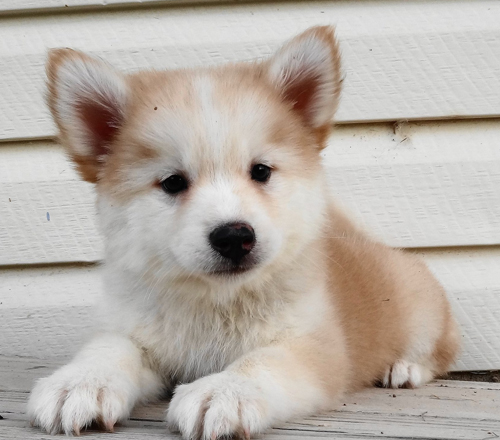 Pomskies are quite playful and energetic dogs and they require foods full of protein and vitamins to allow them to live a long and content life.
Pomskies are quite playful and energetic dogs and they require foods full of protein and vitamins to allow them to live a long and content life.
Just like people, dogs also require a well-balanced diet combined with exercise to ensure that they don’t end up with weight-related issues.
The quality of food is also vital as poor quality food and treats can often times lead to illness. Many owners choose to feed their dogs dry kibble which is rich in protein and contain less carbohydrates; a premium quality kibble combined with exercise should aid in managing your pomsky’s weight.
Three key foods to include in your dog’s diet are:
- Veggies
- Whole grains
- Meat
Vegetables are a great source of fibre and other vitamins which are essential to your dog, in addition, grains provide plenty of energy carbs and meat provides protein and energy as well.
6. Pomskies can have unpredictable behavior
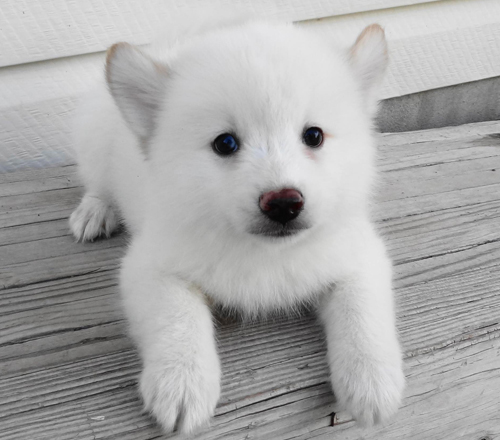 Because there’s little info that will solidly define a Pomsky’s behavior and personality, owners often find themselves confused with episodes of their dog being so playful now and stubborn the next.
Because there’s little info that will solidly define a Pomsky’s behavior and personality, owners often find themselves confused with episodes of their dog being so playful now and stubborn the next.
If at some point you ended up owning a Pomsky, don’t be surprised if he tends to enjoy spending his time more with the other members of your family than with you. Or when he runs to the door to greet your older brother excitedly while literally ignoring your existence.
The Husky in him urges him to choose his favorite human in the “pack”. Other dog breeds that act like this include Basenjis, Greyhounds and Shiba Inus.
Meanwhile, Pomeranians may act differently. Because they love attention, you bonding with other pets in the house or even with your own kids can make them feel jealous. This is also a dominant trait that can be passed down to Pomskies.
Situations like this may disappoint you because after all, you are putting a lot of work in trying to raise a well-behaved Pomsky. Fortunately, this is treatable and here’s how.
- Give love and attention: Because of their Pomeranian blood, Pomskies can be really affectionate. They gravitate deeply towards a person whom they can bond with more.
- Socialize with other people and pets: Socialization for most dog breeds begin as early as 6 weeks old but for Pomskies, they should be anywhere between 10 and 12 weeks old. It is during this age when a pup’s brains are receptive to social interactions with pets, places, things and people.
- Practice positive association: As you bond together to build a positive and loving relationship. You can start by giving him treats and praises. This will train him to associate you with treats, which for him is the good stuff.
Pomskies are:
- Affectionate, but can be more affectionate to his favorite person
- Protective
- Socialization with other pets begin as early as 10 weeks old
- Energetic and playful as if they grew up in a farm
- Very intelligent that you can interact with them
- Trainable but can be stubborn once they grew tired of their old tricks
If you can accept the facts that are presented here so far, then you and a Pomsky can be a good match together.
7. You can’t just have one, they love to be in a pack
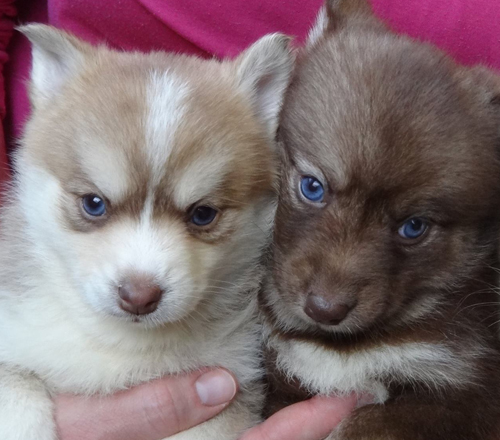 Like their parents, Pomskies love to be in a pack they can follow around and bond with. This makes them a great family dog and an ideal playmate for kids aged six and above especially if they are raised together.
Like their parents, Pomskies love to be in a pack they can follow around and bond with. This makes them a great family dog and an ideal playmate for kids aged six and above especially if they are raised together.
A kid’s high energy level and an outgoing personality can perfectly match a Pomsky’s.
Enter additional pets and you will be surrounded with multiple bundles of energies you can drown yourself in. Not to mention the in-sync howling and whining at random times.
Don’t forget to take them to places where they can run around freely with other pets and they will love you for it.
However, if a Pomsky has a lot of pent-up energy, they might chew on things and start to develop destructive behavior. This is another reason why pairing them up with other dogs of their kind or size will spare you a ton of worries and allow you to have time for other things.
8. Pomskies can be your perfect hiking partner
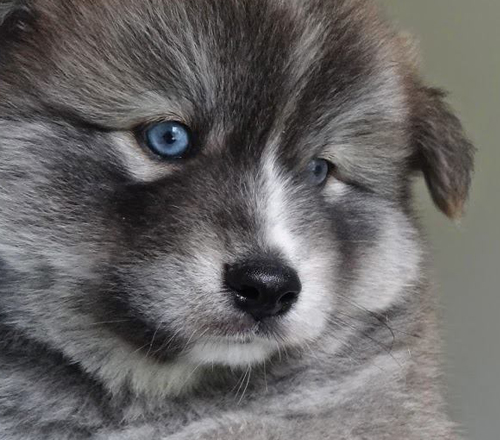 Imagine combining a working dog and a watch dog into a single breed. Pomskies can be a workhorse, but only in the exercise and playtime arena.
Imagine combining a working dog and a watch dog into a single breed. Pomskies can be a workhorse, but only in the exercise and playtime arena.
If you are a hiker or have an active lifestyle, you and a Pomsky can make a great team. They can be athletic, agile and fond of chasing smaller pets. But if extreme outdoor activities are not your thing, give your Pomsky a moderate-level of activity daily.
- Minimum of 20-minute walk every morning
- One to two hours of playtime indoors during the day
- Short walk to cap off the day
During nap times though a Pomsky might walk out of the room to find a spot where they can be on their own. It’s nothing to worry about though because given their Siberian Husky background, Pomskies can be very independent creatures as well that they don’t mind relaxing without you near them.
But when it is time to play, they mean serious business.
9. Very intelligent dog breed
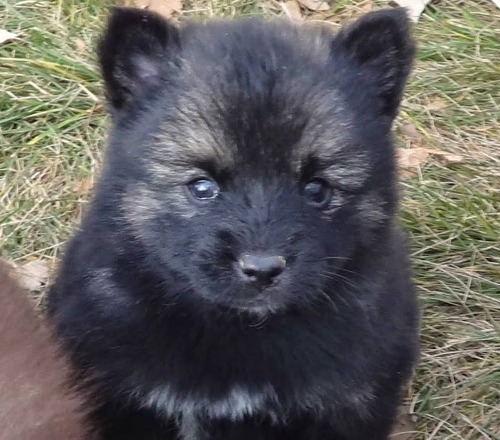 Sibes are placed above-average in intelligence. Pomeranians are very bright. The only difference is how they prefer to show off their skills.
Sibes are placed above-average in intelligence. Pomeranians are very bright. The only difference is how they prefer to show off their skills.
For example, Poms love to be the darling of the crowd and to please their humans with the perfect execution of their tricks. In contrast, Sibes tend to use their intelligence in things that will get them in trouble like escaping, digging (also known as gardening!) and running off.
This doesn’t mean that Sibes can’t be adorable too because they know when you are trying to teach them something. But instead of actually doing it, they might just talk back to you and a conversation will ensue. Ever heard of the talking Huskies?
As a result, a Pomsky can be either shy and stubborn or extroverted, depending on which of their Sibe mom and Pom dad’s trait will be dominant. If you are an ambivert (somewhere between an introvert and extrovert), a Pomsky might be the perfect pet for you.
10. More and more Pomsky breeders to consider
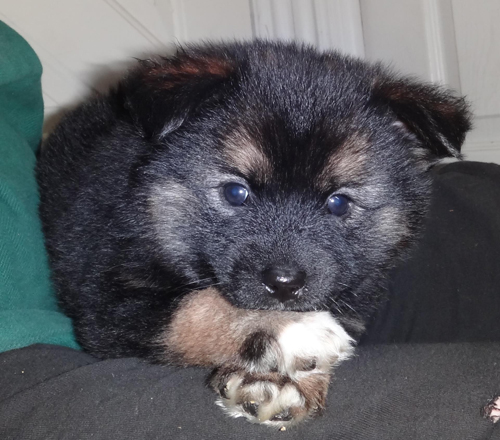 Serious Pomsky buyers should only deal with a reputable dog breeder. But due to this breed’s growing popularity, the number of new local breeders has tripled since three years ago.
Serious Pomsky buyers should only deal with a reputable dog breeder. But due to this breed’s growing popularity, the number of new local breeders has tripled since three years ago.
Local Puppy Breeders have reported that there were only 19 registered breeders in January 2015 in the US. As of January 2017 though, this number has increased to 58!
What does this mean?
There could be a lot of inexperienced breeders out there popping up everywhere. So, to make the most of your money, avoid breeders who:
- Don’t have a good track of record or an established reputation
- Treat their pets like livestock
- Don’t have vet care history (e.g. shot records, genetic testing, and screening tests)
- Don’t know a lot of things about Pomskies
- Don’t seem interested in learning a few things about their potential buyers
- Have no returns policy and have non-refundable deposit because they don’t care about the well-being of their pets
- Have secret facilities where they can practice overbreeding
- Offer free shipping – because they are not interested in making sure that all puppies go to good homes
- Offer no parental visit – because they are hiding something like health issues of the parents
To help you find pomsky dog for sale from a reputable dog breeder, contact organizations like the Pomsky Club of America (PCA) and the International Pomsky Association (IPA) to ask for references.
11. Adopting a Pomsky can take time (but it’s worth it!)
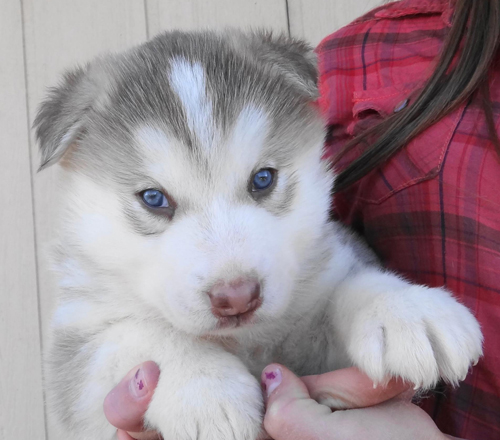 If you have a limited budget or simply prefer to adopt a Pomsky, find a dog shelter or a rescue center near you. Check out the list of their available dogs for adoption and schedule a visit as soon as possible.
If you have a limited budget or simply prefer to adopt a Pomsky, find a dog shelter or a rescue center near you. Check out the list of their available dogs for adoption and schedule a visit as soon as possible.
It may take you six months to adopt a Posmky in the US. Getting approved depends on several factors like finding a match suitable to your lifestyle, availability to train a pet, commitment and personality. It is advisable to know what kind of Pomsky temperament and size you are looking for head on so as to expedite the human-and-dog matching process.
Remember that adopting a puppy and an adult Pomsky has its own requirements and challenges. Puppies need vaccination, socialization, training and spaying/neutering while seniors need constant mental stimulation and end-of-life care.
To start, assess what you can afford to give (and give up).
- Are other members of your family okay with adopting a Pomsky full-grown size or a puppy?
- Are your other pets capable of getting along with a new pet?
- Would your pets get used to sharing their resources with this new pet? Would they get jealous if you give this new pet a lot of attention?
- Is there enough living space to accommodate your new pet, his new supplies and other resources?
12. Other dog breeds out there can also look a lot like a Pomsky
That’s right. Not all Pomskies that you see on the Internet are Pomskies!
Because Pomsky puppies are a product of cross-breeding using specimen samples from a Siberian Husky female and Pomeranian male, their colors, patterns, stature and striking facial features may look similar to other breeds. Examples of Pomsky-look-alikes include:
- Finnish Lapphund
- Alaskan Klee Kai
- Samoyed
- Miniature Husky
- Japanese Spitz
- Keeshond
- German Spitz
- American Eskimo Dog
Still here? You must be really determined to buy a Pomsky!
And you definitely deserve to have one.
To sum it all up, Pomskies can be a great companion to the right owner. They can be a great playmate for young children and a source of joy to those who will appreciate their fluffiness, affection, high energy level, intelligence, love for great adventures and guard dog instincts.
Make an informed decision by investigating all aspects of Pomsky ownership. You are buying a dog because you are ready to be a good provider and a parent to them. Do not buy a Posmky if the only reason you have is that they are cute and popular.
Frequently Asked Questions About Pomskies
What should you feed a Pomsky?
Serve them a cup of high-quality dry kibble twice a day and make sure to give them fresh water all the time. They may also become very picky with food after one year, so keep your options open to add variety into their diet.
How much do Pomskies cost?
A Pomsky puppy costs anywhere between $1,000 and $5,000. Learn 6 things to be aware of when purchasing a Pomsky.
Do Pomskies Shed?
Pomskies are “heavy shedders”. They shed twice a year (spring and fall) and each shedding can last up to 90 days. During this period, brush him with a bristle brush daily. Other things to keep in mind:
- Brush his coat weekly to prevent mats and tangles
- Give him a bath as needed or weekly
- Trim nails every few weeks
- Keep his ears clean and dry
- Brush his teeth daily to prevent the onset of gum and teeth infections
How big do Pomskies get?
A Pomsky’s size may vary but they can grow as small as a toy size up to medium size. Pomskies can grow 10 to 15 inches in height and can weigh 4 to 15 kilograms. Learn more about how big Pomskies get.
What is a Pomsky’s lifespan?
A Pomsky’s lifespan can reach 12 and 15 years.
What is the Pomsky temperament?
In general, Pomskies can be affectionate, playful, active, trainable and social. Their temperament depends on which aspect of their Siberian Mom’s and Pomeranian Dad’s traits will be dominant. The amount of socialization a Pomsky receives at a young age will also shape his personality. Learn more about the Pomsky temperament.
Are Pomskies active dogs?
Pomskies are active dogs. Schedule a time for playing with you or other pets during day time. If healthy, a Pomsky can participate in dog sports events that require a higher level of nose work, obedience and agility.
Are Pomskies hypoallergenic?
Pomskies are not hypoallergenic dogs.
What is the Pomsky activity level?
Pomskies need a moderate level of activity every day.

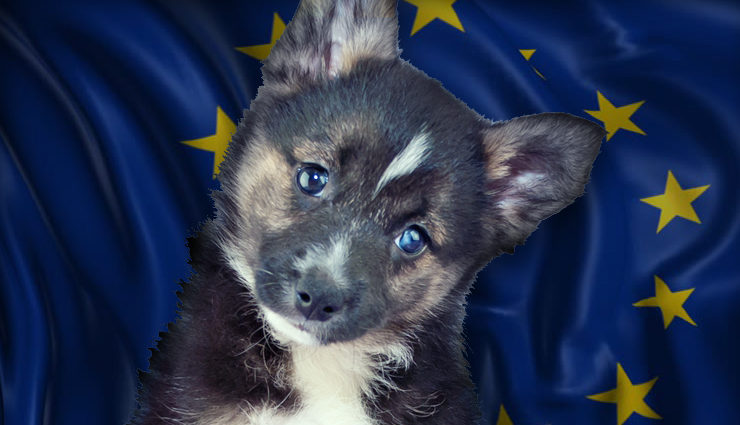
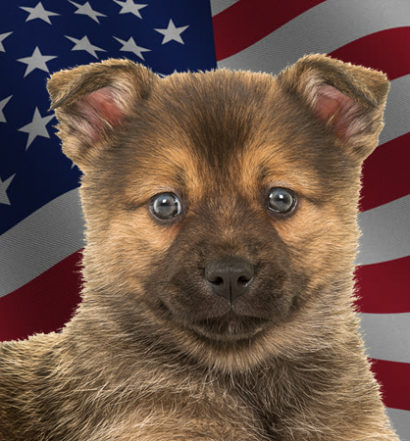

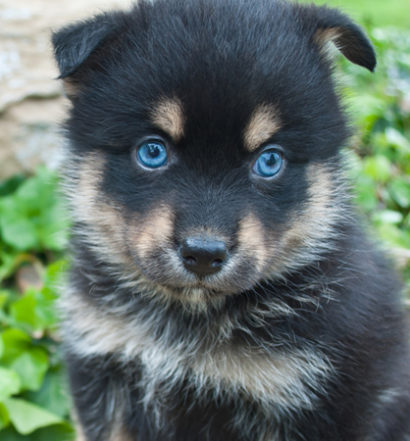
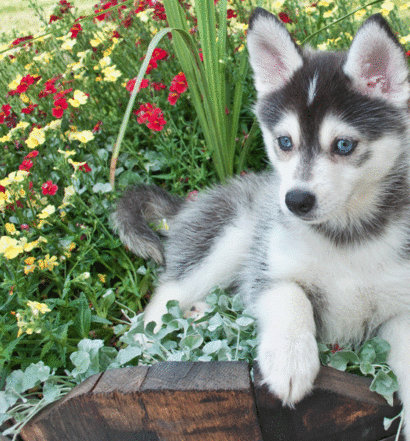
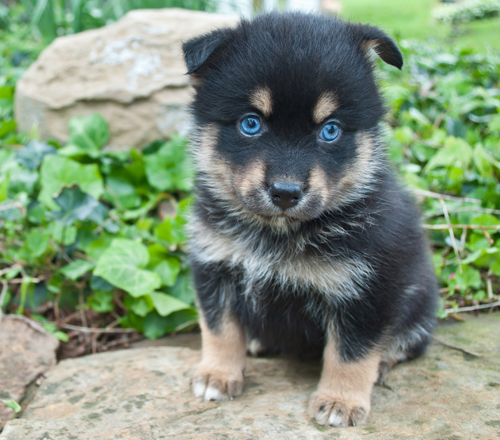

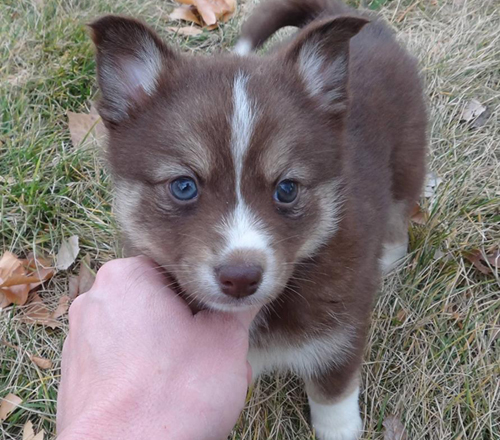
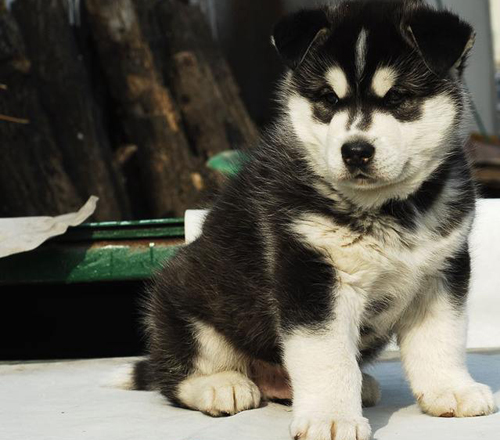
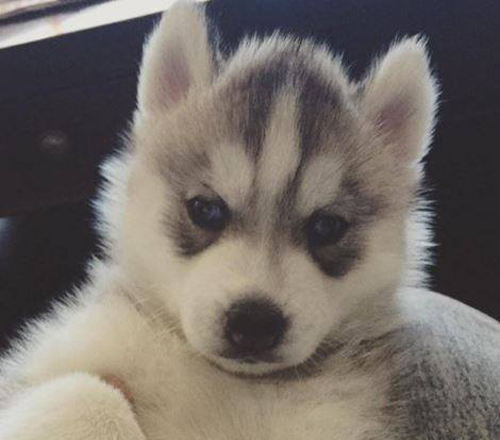
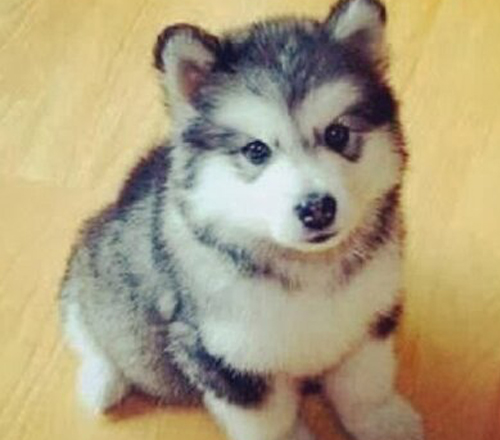
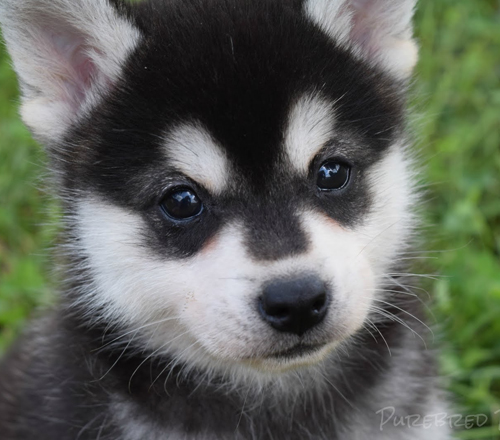
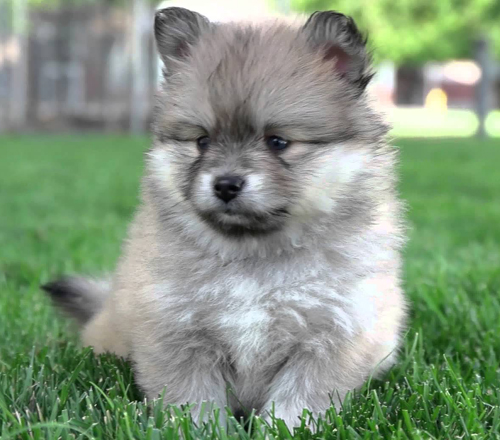
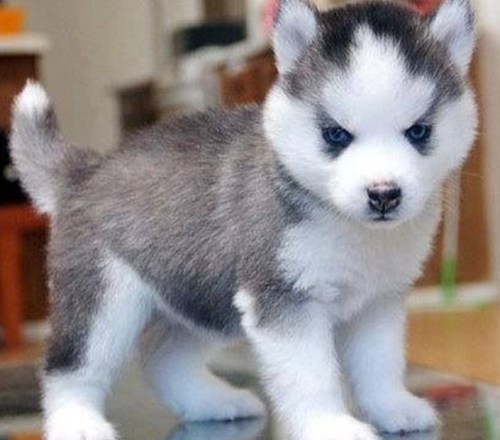




RECENT COMMENTS